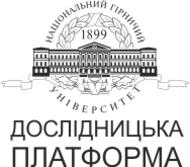№78-19
Investigation of the influence of technological parameters on the kinetics of austenite decomposition in boron-containing steel
M. Sobolenko1, M. Alekseev2
1Dnipro Metallurgical University of the Ukrainian State University of Science and Technology, Dnipro, Ukraine
2Dnipro University of Technology, Dnipro, Ukraine
Coll.res.pap.nat.min.univ. 2024, 78:217–224
Full text (PDF)
https://doi.org/10.33271/crpnmu/78.217
ABSTRACT
Purpose. Conduct a study on the kinetics of austenite decomposition and determine the extent of influence of hot plastic deformation and interrupted cooling regimes on the structure formation of boron-containing steel.
Methods. The investigation of phase transformations was conducted using differential thermal analysis on samples of boron-containing steel, accompanied by studies of microstructure and hardness.
Results. The kinetics of transformations were studied, and a thermokinetic diagram of the decomposition of hot-deformed austenite in boron-containing steel was constructed, based on austenitization tempetatures ranging from 1050 to 11000С, followed by interrupted cooling and further cooling at a rate of 0,09 to 0,120 С/s, comparable to the cooling rate of the external coils of rolled bundles. It was established that the temperature-deformation regimes of rolling and the cooling conditions applied in real production technologies of underlayers (especially in bundled forms) are the cause of the appearance of a range of structural components in the treated steel. The heterogeneity of the structure causes an uneven distribution of properties along the length and cross-section of the underlayer, disrupts the thermodynamic conditions for the spheroidization of cementite, and significantly complicates the process of cold plastic deformation during upsetting.
Scientific novelty. The study investigated the impact of hot plastic deformation and interrupted cooling regimes on the kinetics of phase transformations in round bar rolling of boron-containing steel. The patterns of steel structure formation during cooling at various rates from the rolling temperature were established.
Practical significance. It has been discovered that for boron-containing steel, hot plastic deformation and interrupted cooling significantly influence the decomposition of austenite. Simultaneously, it has been demonstrated that their separate and individual effects on the kinetics of austenite decomposition differ substantially from the process of phase transformations. The obtained results can be utilized in the development of industrial technology for the production of thermally treated coiled rolled products made from boron-containing steel for cold upsetting with a relatively uniform spheroidized structure.
Keywords: structure, kinetics of austenite transformations, low-carbon steel, hot plastic deformation, interrupted cooling.
References
1. Parusov, V.V., Parusov, O.V., & Sychkov, A.B. (2010). Procat iz borsoderzhashchikh staley dlya vysokoprochnykh krepezhnykh izdeliy: monohrafyia.
2. Prokat iz yakisnoi konstruktsiinoi nelehovanoi ta lehovanoi stali dlia kholodnoho vydavliuvannia ta vysadzhuvannia. Tekhnichni umovy.(ISO4954—93) : DSTU 3684-98 . – Z Popravkamy (IPS № 4-2002), (IPS № 7-2003), (IPS № 8-2006), (IPS № 2-2007), (IPS № 3-2012), Zminoiu № 1 (IPS № 7-2006) ta Zminoiu № 2 (IPS № 3-2022): DSTU 3684-1998. – [Chynnyi vid 1998 – 01 – 01]. (2022). Kyiv : Derzhavnyi standart Ukrainy.
3. Bolshakov, V.I., Dolzhenkov, I.E., & Zaitsev, O.V. (2010). Obladnannia termichnykh tsekhiv, tekhnolohii termichnoi ta kombinovanoi obrobky metaloproduktsii: pidruchnyk. Dnipro «RIA Dnipro – VAL».
4. Gul, U.P. (2011). Deformatsionnyye vozdeystviya v tekhnologiakh termicheckoy I kombonirovannoy obrabotki metalloizdeliy. Stroitelstvo, materialovedeniye, mashinostroyeniye, 58, 157–177.
5. Ivashchenko, V.P., Shvachych, H.H., & Sobolenko, M.O. (2013). Novitni metalurhiini tekhnolohii na osnovi vykorystannia produktyvnykh bahatoprotsesornykh obchysliuvalnykh kompleksiv. Teoriia i praktyka metalurhii. (3–4), 78–87.
6. Klimenko, A.P., Karnaukh, A.I., Burya, A.I., & Sitar, V.I. (2008). Diffenetsial’no – termicheskiy analiz i tekhnologii termicheckoy obrabotki: monohrafyia.
7. Parusov, E.Y., Hubenko, S.I., Klymenko, O.P., Chuiko, I.M., & Sahura, L.V. (2018). Osoblyvosti kinetyky rozpadu austenitu i zakonomirnosti formuvannia struktury stali C82Dza bezperervnoho okholodzhennia. Visnyk Prydniprovskoi derzhavnoi akademii budivnytstva ta arkhitektury, (2).16–25.
9. Vakulenko, I. O. (2008). Structural changes in carbon steel for a long exposures at subcritical temperatures. Science and Transport Progress, 21, 263–265. https://doi.org/10.15802/stp2008/15829
10. Sobolenko,M.O. (2024). Doslidzhennia zakonomirnostei formuvannia struktury ta mekhanichnykh vlastyvostei stalei pry termichnii obrobtsi. Ukrainskyi zhurnal budivnytstva ta arkhitektury, (3). 62–68.
11. Sobolenko, M., & Mamuzic, I. (2024).Promising directions for comprehensive spheroidization of cementite in low-carbon steels for cold extrusion. 17th International Symposium of Croatian metallurgical society. SHMD 2024. Materials and metallurgy. Section “A”, 308.
12. Parusov, E., Sychkov, A., Gubenko, S., & Ambrazhey, M. (2016). Influence boron on forming structure of rolled steel and increase its technological plasticity at drawing. Scientific Jornal of the Ternopil National University, 3(83),99–108.




